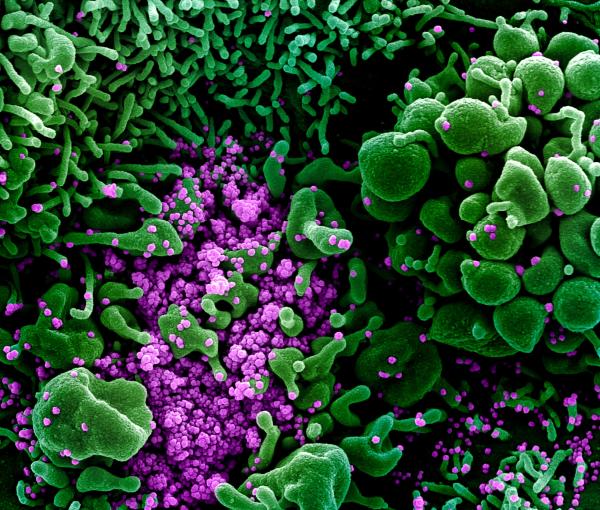We have learned a lot about the SARS-CoV-2 virus during the four years of the COVID-19 pandemic. Because the virus replicates its RNA and mutates in every infection, its spike proteins keep changing. Thus, by the time a vaccine targeting a specific spike protein becomes available, a new variant of the virus with a new spike protein emerges that might be both more transmissible or cause more severe disease.
For example, new viral variants such as the original Omicron and the many subtypes descended from it were less susceptible to the vaccines developed to protect against the original Wuhan SARS-CoV-2. Moreover, even when the vaccine and virus are a good match, protection from the vaccine wanes substantially with time. For those reasons and because vaccine uptake, especially of the newest round of vaccines, has been anemic in the U.S., as of late January, we were experiencing more than 26,000 COVID hospitalizations per week. Fortunately, the numbers of COVID-related Emergency Department visits, hospitalizations, deaths, and levels of SARS-CoV-2 in wastewater (an early predictor of future COVID infections) were trending downward.
To prepare for the emergence of new SARS-CoV-2 "variants of concern" or other completely new epidemic coronaviruses, researchers are taking various approaches to creating vaccines that will protect against not only known viruses but also against viruses that have not yet appeared.
Although we are far below the COVID peaks during the height of the pandemic, there are reasons for concern about the future – especially the increasing ability of successive SARS-CoV-2 variants of concern to escape immunity from both natural infection and vaccination and the risk of spillovers of various animal coronaviruses into humans. For example, a 2015 article in Nature Medicine by an international group of researchers described the peril posed by a SARS-like virus, SHC014-CoV, and concluded that there was “a potential risk of SARS-CoV re-emergence from viruses currently circulating in bat populations.” Other coronavirus researchers have expressed similar concerns over the past decade.
We need, therefore, to be prepared for the emergence of new pandemic viruses, including by developing new vaccines that are as close as possible to a “universal vaccine” that will protect against multiple types of coronaviruses, including newly-arising viral variants. Several approaches are being taken, including modifying adenoviruses as a vector for vaccine antigens and using ferritin nanoparticles and self-amplifying RNA (which works similarly to messenger RNA (mRNA) except that it can replicate itself once inside the body's cells).
To elicit a broader immune response, some vaccine developers are incorporating numerous different fragments of the SARS-CoV-2 virus' spike proteins, which the virus uses to bind to human cells and gain access. Other researchers are focusing on parts of the virus that have been highly conserved – that is, that do not tend to mutate – in the variants of concern that have arisen up to now.
Caltech Professor Pamela Bjorkman and her colleagues have used the multiple-spike-proteins approach with some preliminary success. They have presented the immune system – in animal models, to this point – with fragments of the spike proteins from SARS-CoV-2 and seven other SARS-like beta coronaviruses that have been attached to a protein nanoparticle, forming a structure that induces the production of a broad spectrum of cross-reactive antibodies. Early results showed that antibodies elicited by this synthetic vaccine could bind not only to the eight coronaviruses whose spike proteins are represented on the nanoparticle but also to four additional coronaviruses not present in the vaccine.
Another important finding was that “when vaccinated with this so-called mosaic nanoparticle, animal models were protected from an additional coronavirus, SARS-CoV, that was not one of the eight represented on the nanoparticle vaccine” (emphasis in original). That implies that the vaccine might protect subvariants of SARS-CoV-2 that have not yet appeared.
Subsequently, the group reported that the vaccine appeared to protect mice and monkeys that had been exposed to an array of coronaviruses. Professor Bjorkman hopes to have a vaccine in clinical trials this year.
A large group of U.S. Army medical researchers is also making important advances with a nanoparticle that elicits neutralizing antibodies against the original (Wuhan) SARS-CoV-2 virus and subsequent variants of concern, as well as against SARS-CoV, the virus that caused the SARS outbreak 20 years ago. Their vaccine-elicited immune responses rapidly eliminated replicating virus in the upper and lower airways and lung tissue of non-human primates after the high-dose SARS-CoV-2 virus challenge. They have a vaccine in an early clinical trial.
Yet another recent approach is being taken by a multinational group of academic and industry researchers who used a “viral-genome-informed computational method for selecting immune-optimized and structurally engineered antigens” to identify an antigen structure that elicited broad-based immune responses against different members of the large group of SARS and SARS-CoV-2-related viruses that occur in nature. They showed that “a single antigen based on the receptor binding domain of the spike protein elicits broad humoral responses against SARS-CoV-1, SARS-CoV-2, and two other viruses in mice, rabbits, and guinea pigs.” Phase 1 clinical trials are underway in England.
Substantial amounts of public and private research funding are being made available for ongoing work on such vaccines. The Coalition for Epidemic Preparedness Innovations (CEPI) has provided initial funding of around $200 million, and the NIH added an additional $36 million. However, those expenditures won’t begin to cover the costs of the clinical trials required and fall far short of the approximately $10 billion spent by the Trump Administration on Operation Warp Speed, which was instrumental in developing the first round of COVID vaccines in 2020 in record time.
Some of that slack will likely be addressed by the U.S. Department of Health and Human Services' funding of more than $500 million to develop next-generation COVID-19 vaccines, part of the government's $5 billion Project NextGen. Its areas of focus include vaccines that are easier to administer and produce longer and more robust protection and the development of new technologies that will enable faster, cheaper, and more flexible production of vaccines.
New pandemics are inevitable. To prepare for them, we need government-funded basic science in universities and the collaboration of drug companies experienced in vaccine research and development.




